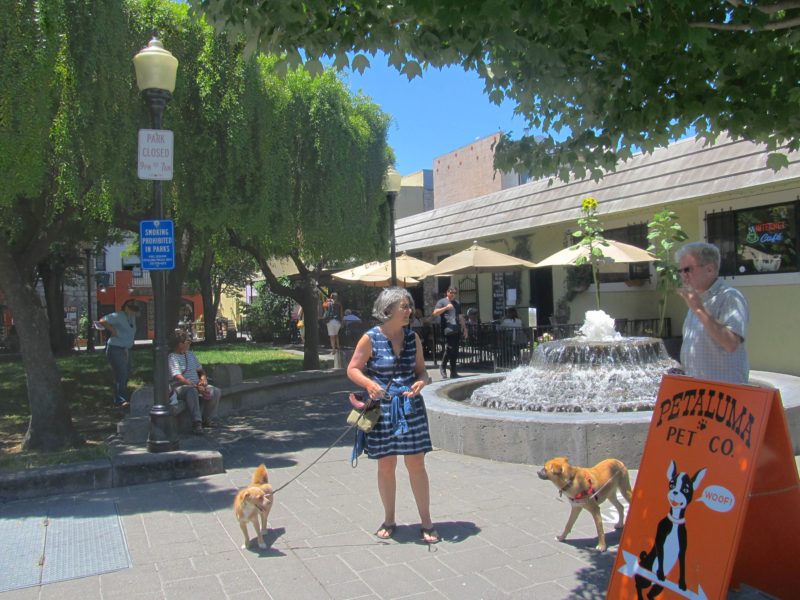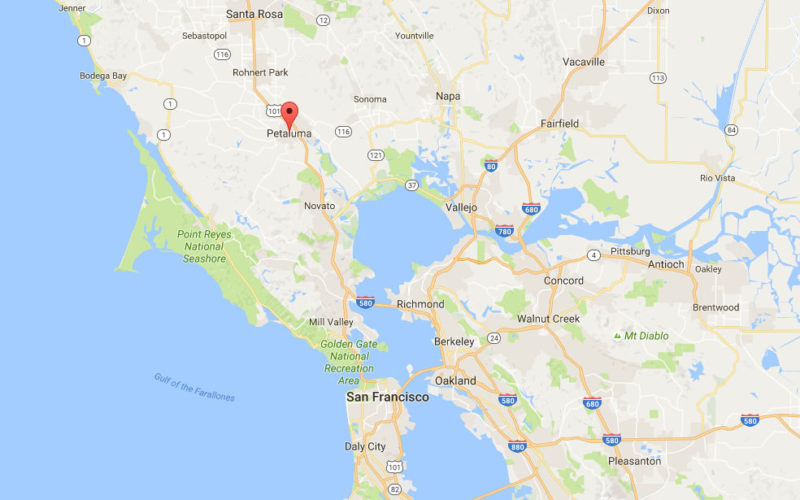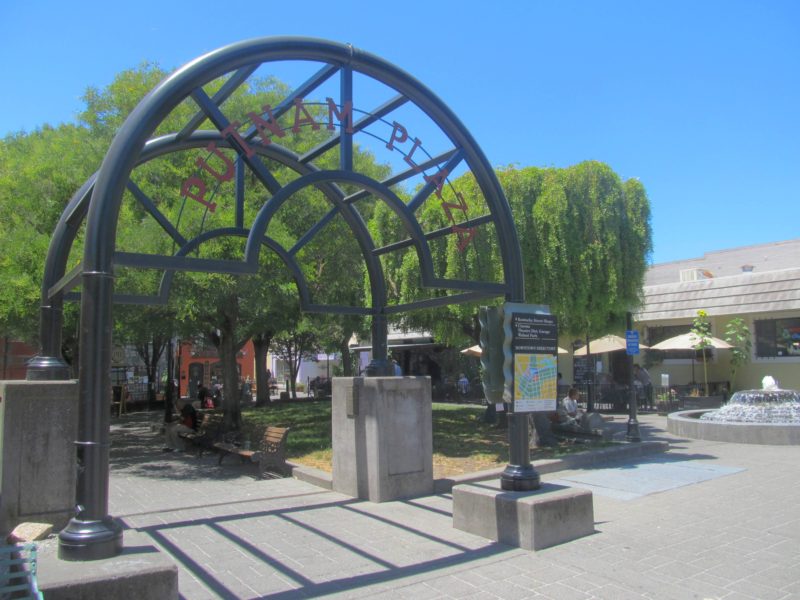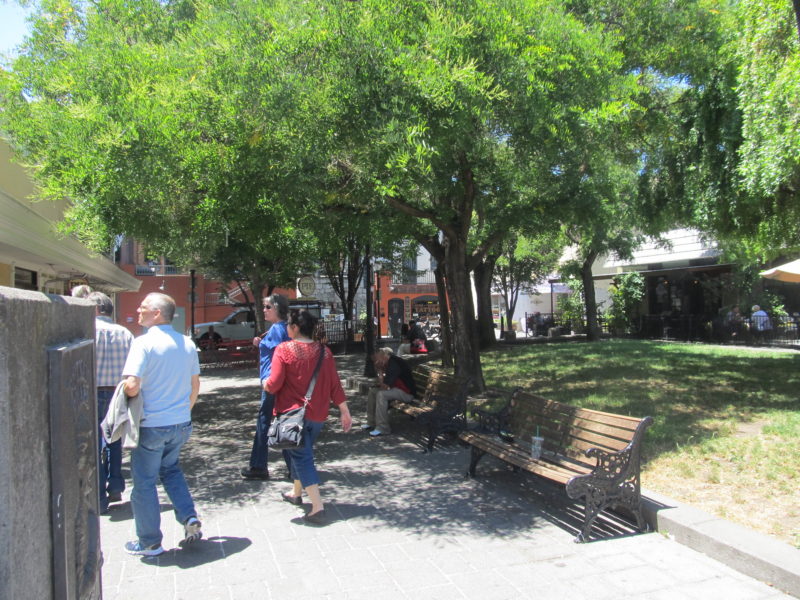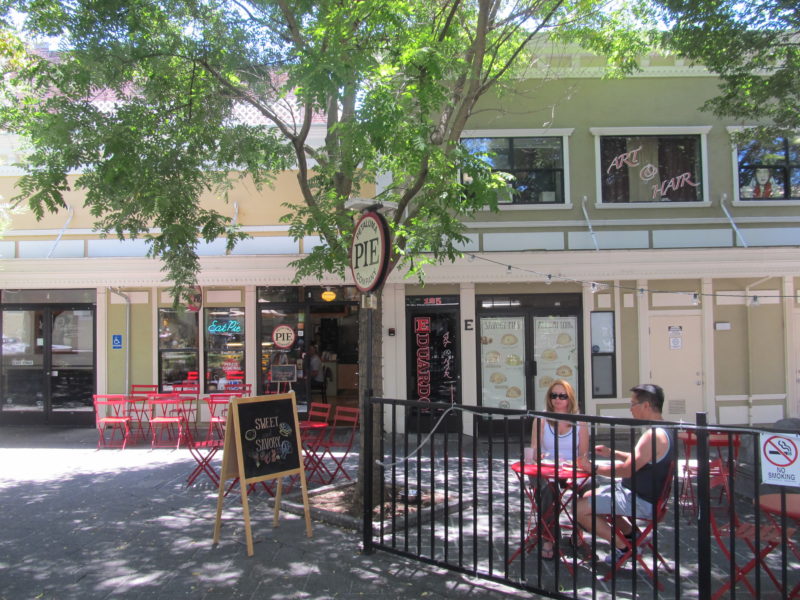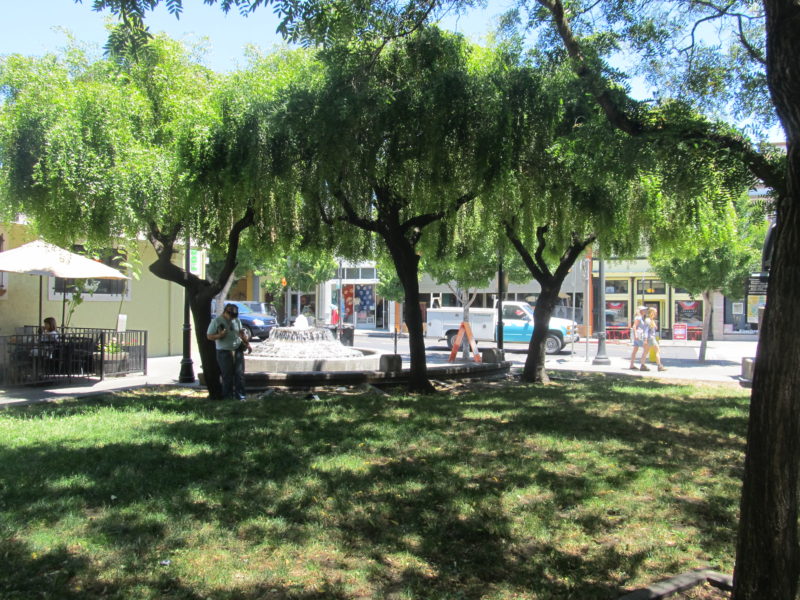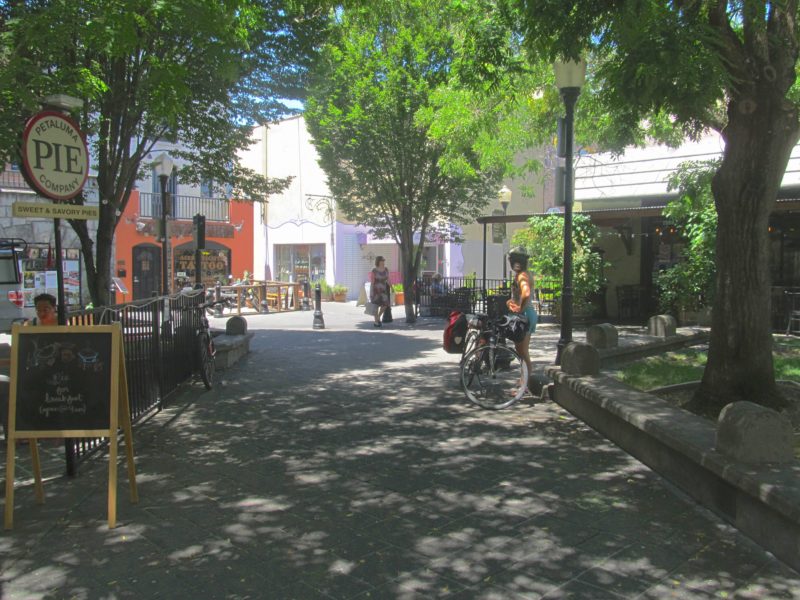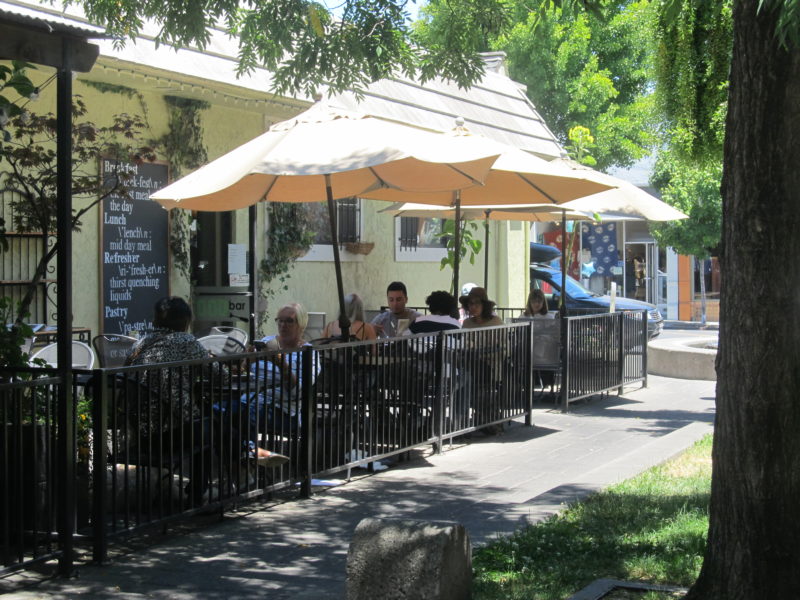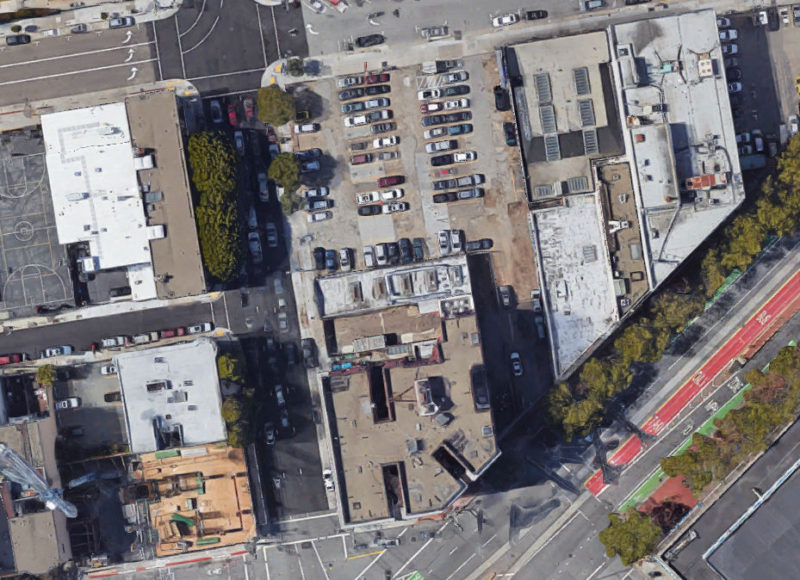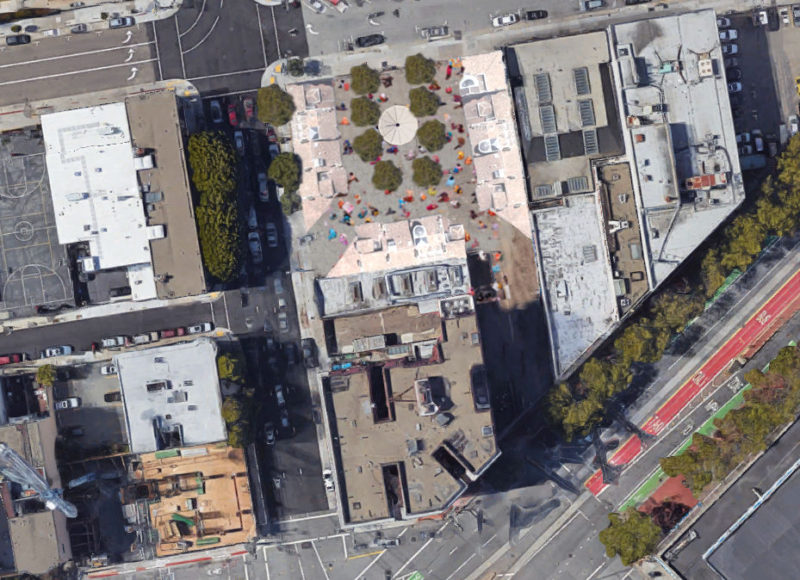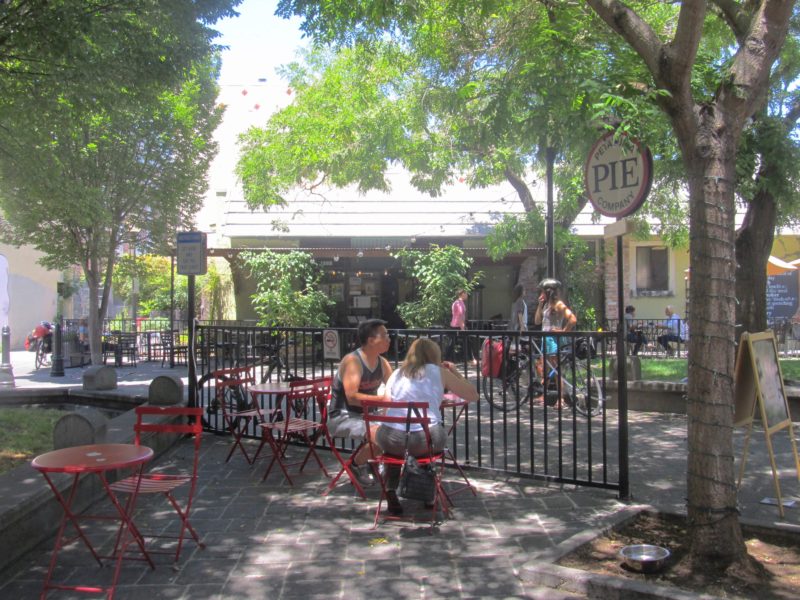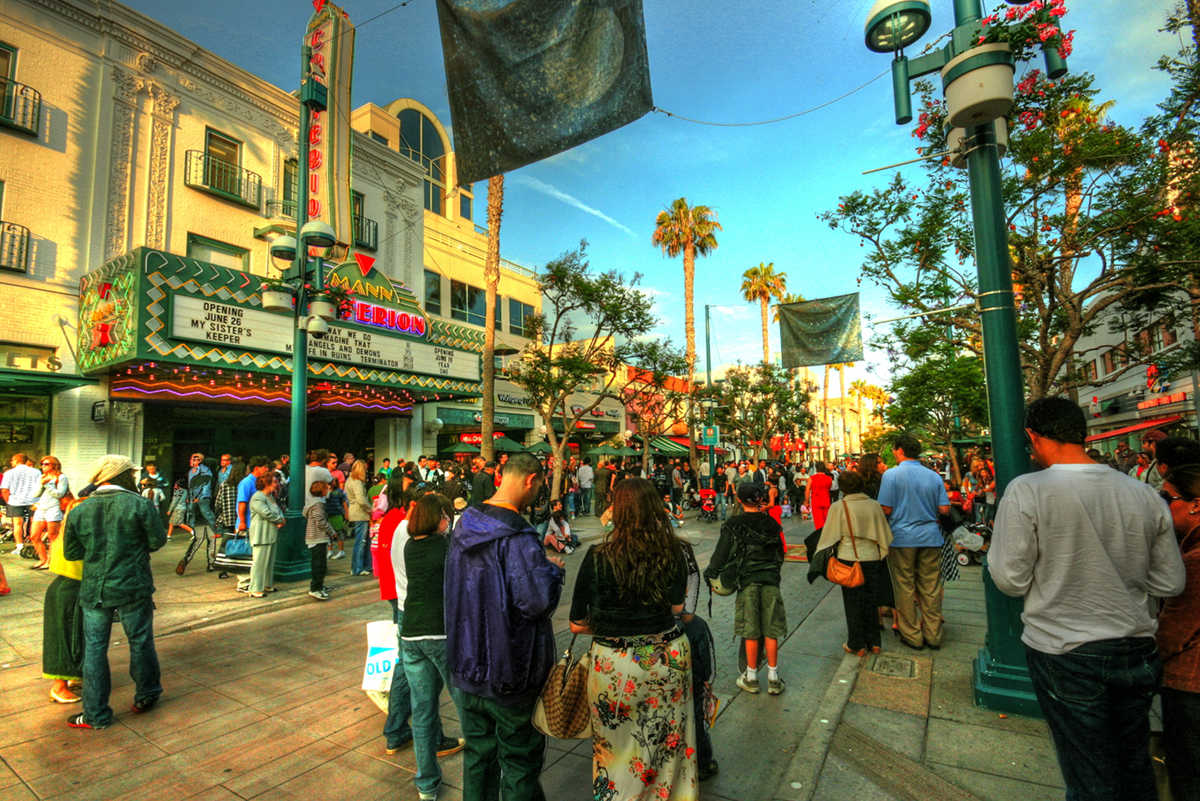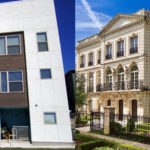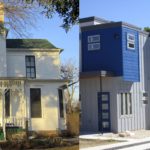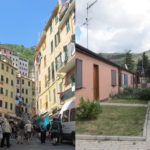Welcome to the Let’s Explore series, where we explore a notable place from an urban design perspective.
Putnam Plaza, opened in 1987, is a small public space in downtown Petaluma, a town of just under 60,000 people 30 miles north of San Francisco.
Many American cities which lack car-free downtown public spaces would do well to emulate Putnam Plaza. In an era of over-scaled and sleek-but-unlovable urban spaces and buildings, Putnam is appropriately-sized, unpretentious, and inviting, a great example of how to create a successful public space at a modest scale.
Putnam Plaza overview
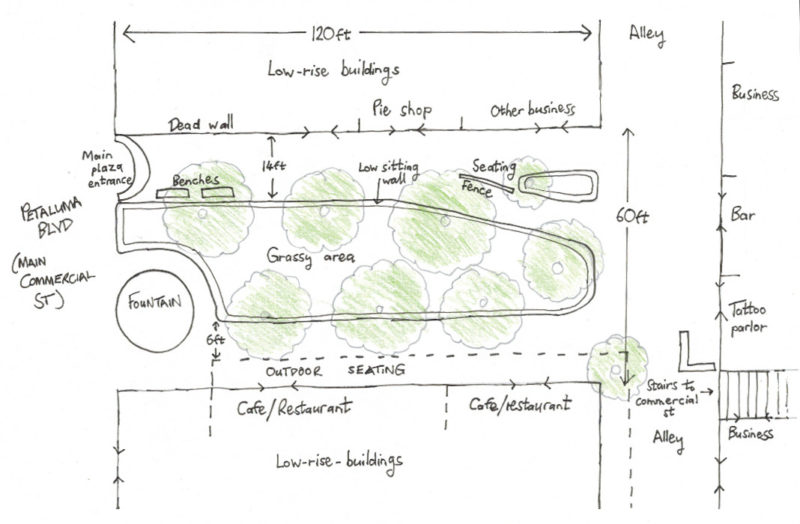 We’ll explore Putnam Plaza using the above plan to see why this space works so well. As you read further, keep referring back to this map to get your bearings.
We’ll explore Putnam Plaza using the above plan to see why this space works so well. As you read further, keep referring back to this map to get your bearings.
1. Plaza entrance
An arch on the southern side announces Putnam Plaza and invites us in. Good public spaces are often accessed through some kind of portal which demarcates the space from the surrounding world. Given that this plaza is accessed from a busy commercial street, Petaluma Boulevard, the arch is important in increasing the plaza’s refuge effect.
2. Path beyond the entrance
Two benches invite people to linger near the entrance on Petaluma Boulevard, encouraging still more people to enter the plaza. People presence is a virtuous cycle: People attract people, who attract more people, and on and on. There are few benches in Putnam Plaza but there is plenty of secondary public seating in the form of the low curb/seating wall running around the grassy area, and the grassy area itself.
We can already see right to the end of the plaza; it’s small, approximately 60ft wide by 120ft long. This is a key feature of Putnam Plaza’s success: The space only needs 10 people to feel alive, in contrast to San Francisco’s massive Civic Center Plaza which feels desolate with 100 people…
3. The pie shop
Walking further, we arrive at the Petaluma Pie Company shop on the left, a popular destination which draws people into Putnam Plaza (you can’t go wrong with the banana cream pie!). A successful public space features as many varied destinations as possible around the space’s edges. The pie shop helps to offset the deadening effect of the blank wall of Starbucks located on the left off of the above photo.
4. The central grassy area
Turning around from the pie shop we face the central grassy area. The Plaza’s creators wove trees excellently into its design. Walking the looped path around the Plaza, you’re never far from tree canopy, which makes the space feel cozy and defined and creates a retreat from Petaluma’s often hot sun. At the same time, the buildings surrounding the plaza are low-rise, giving more visual access to blue sky.
5. The end of the Plaza
Crucially, the plaza isn’t dead-ended. As our map indicates, at the end of the plaza there’s an alley (which leads to other commercial streets and is mainly used for deliveries, although it’s pedestrian-friendly too) and a stairway leading up to another main commercial street. This helps weave the plaza into the urban fabric, making it a part of people’s daily lives. People can pass through on their errands and take a break in the plaza on the way.
There’s also a tattoo parlor and a bar at the end of the plaza, helping to keep the space more active throughout the day.
6. The northern side of the plaza
We loop around the plaza and walk back toward Petaluma Boulevard. The northern side of the plaza is flanked by outdoor cafe/restaurant seating, which, when I was there, was the first part of the plaza to get busy. Like the pie shop, this outdoor seating activates the plaza’s edges which then brings to life the plaza’s center. Passersby see people dining which draws them in to use the plaza too. People attract people.
Possibilities Inspired By Putnam Plaza
Putnam’s modest size and its interesting location perpendicular to a commercial street invites us to imagine public spaces in places we might not otherwise contemplate. Certainly, existing streets could be pedestrianized, a familiar approach used in successful examples like Boulder’s Pearl Street Mall. But there are other possibilities. For instance, a parking lot along a sufficiently vibrant commercial street could be lined with small shops and turned into a Putnam-esque space. If a path could run through so that pedestrians could use the space as a short cut, so much the better. Scraps of under-utilized land in downtowns could be revitalized with this approach.
For instance, here’s a typical parking lot in San Francisco’s Hayes Valley neighborhood. But it’s got promise: A modest size and an alley in the back.
What could the parking lot look like if we Putnam-ized it?
In this back-of-the-envelope makeover we’ve lined the lot with small cafes, restaurants, and shops (with second-floor apartments), added trees and benches, and retained the ability for people to cut through on foot. It could be quite a successful public space.
An inviting, peaceful, modest, and successful public space, that’s Putnam Plaza. In an age of egotistically-driven, alien-feeling, and oversized architecture and urban design projects, this place embraces the polar opposite. Cities everywhere, take note!

